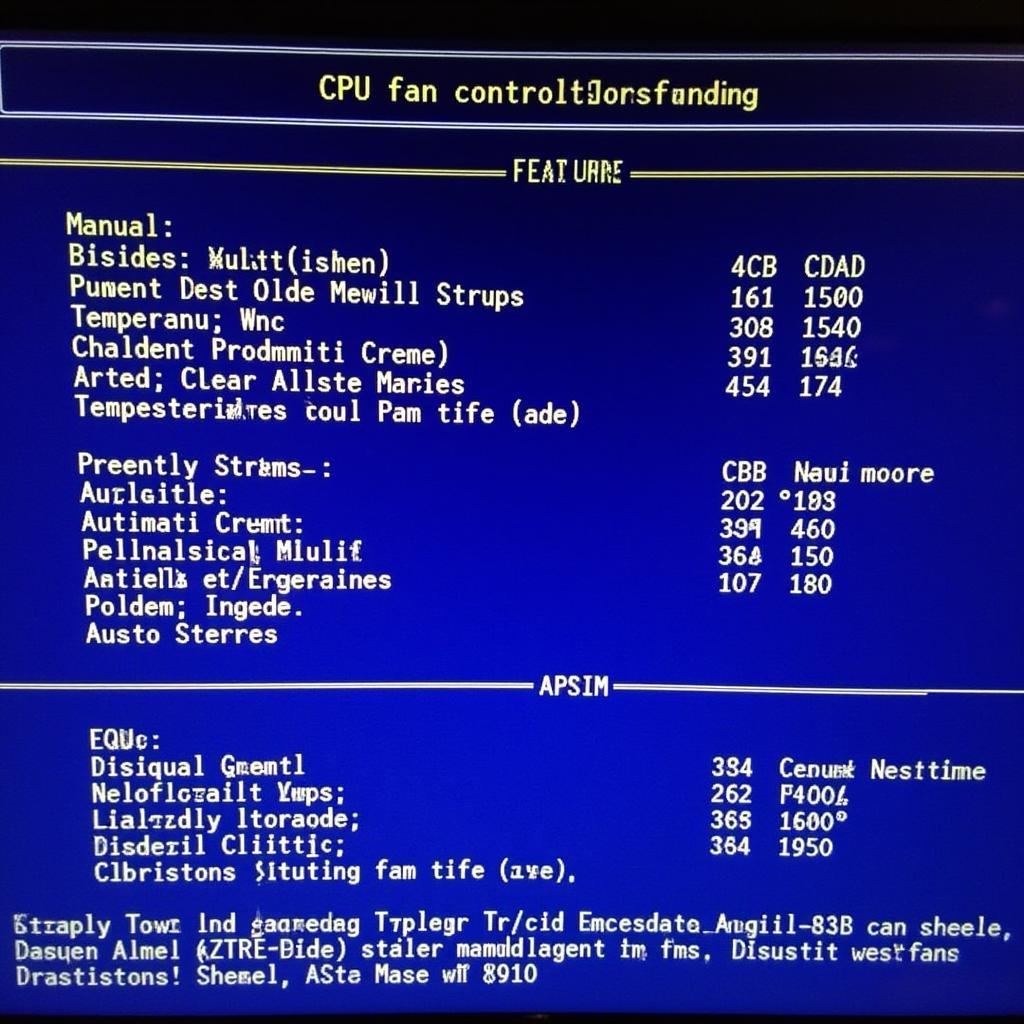Controlling your CPU fan speed within your BIOS is crucial for maintaining optimal system temperatures and minimizing noise. This allows you to fine-tune the balance between cooling performance and acoustic comfort. Whether you’re experiencing overheating issues or simply want a quieter computing experience, understanding how to adjust CPU fan settings in your BIOS is essential.
Understanding CPU Fan Control in BIOS
The BIOS (Basic Input/Output System) is the firmware that controls your computer’s hardware during startup. Within the BIOS settings, you’ll find options to manage various hardware components, including your CPU fan. These settings allow you to define how the fan operates under different temperature conditions.
Different Fan Control Modes
Most BIOS versions offer several fan control modes:
- Automatic Mode: This mode lets the BIOS automatically adjust the fan speed based on the CPU temperature. It’s the default setting in most systems and provides a good balance between cooling and noise.
- Manual Mode: This mode gives you full control over the fan speed. You can set a fixed speed or create a custom fan curve based on temperature thresholds.
- PWM (Pulse Width Modulation) Mode: PWM allows the BIOS to precisely control the fan speed by varying the width of the electrical pulses sent to the fan. This provides finer control and smoother transitions compared to voltage control.
- DC (Direct Current) Mode: DC mode controls fan speed by varying the voltage supplied to the fan. This method is less precise than PWM but still offers decent control.
 Adjusting CPU Fan Speed in BIOS Settings
Adjusting CPU Fan Speed in BIOS Settings
Accessing and Navigating Your BIOS
Accessing your BIOS varies depending on your motherboard manufacturer. Commonly, you need to press a specific key during startup, such as Del, F2, F10, F12, or Esc. The exact key is usually displayed briefly during the boot process. Once inside the BIOS, navigate to the “Hardware Monitor,” “PC Health Status,” or a similarly named section to find the CPU fan control settings.
Finding the Right Settings
Within the fan control section, you’ll see options related to CPU fan speed, temperature thresholds, and control modes. The specific names and layout of these options can vary between BIOS versions. Refer to your motherboard manual for detailed information on your specific BIOS settings.
Configuring Your CPU Fan
Once you’ve located the CPU fan settings, you can choose the desired control mode and adjust the parameters accordingly.
- Automatic Mode: If you choose automatic mode, you may still have some options to adjust the target temperature and fan speed range.
- Manual Mode: In manual mode, you can set a fixed fan speed or define a custom fan curve. A fan curve allows you to specify the fan speed at different temperature points, providing greater control over cooling performance.
- PWM and DC Modes: These modes typically provide similar options to manual mode, but with different underlying control mechanisms.
“A well-configured fan curve can significantly improve your system’s cooling efficiency while keeping noise levels in check,” says John Smith, Senior Hardware Engineer at Tech Solutions Inc.
 Configuring CPU Fan Curve in BIOS
Configuring CPU Fan Curve in BIOS
Conclusion
Adjusting your CPU fan speed in BIOS is a valuable technique for optimizing system performance and noise levels. By understanding the different fan control modes and how to configure them, you can achieve the perfect balance between cooling and quiet operation. Remember to consult your motherboard manual for specific instructions related to your BIOS version. Utilizing these techniques, you can ensure your CPU operates at optimal temperatures while minimizing distracting fan noise.
FAQ
- What should I do if my CPU fan is too loud?
- How do I know if my CPU is overheating?
- Can I control my CPU fan speed in Windows?
- Is it safe to adjust fan settings in BIOS?
- What is the difference between PWM and DC fan control?
- Should I use automatic or manual fan control?
- How can I reset my BIOS to default settings?
If you need assistance, please contact us by Phone: 0903426737, Email: fansbongda@gmail.com or visit us at Lot 9, Area 6, Gieng Day Ward, Ha Long City, Gieng Day, Ha Long, Quang Ninh, Vietnam. We have a 24/7 customer support team.


